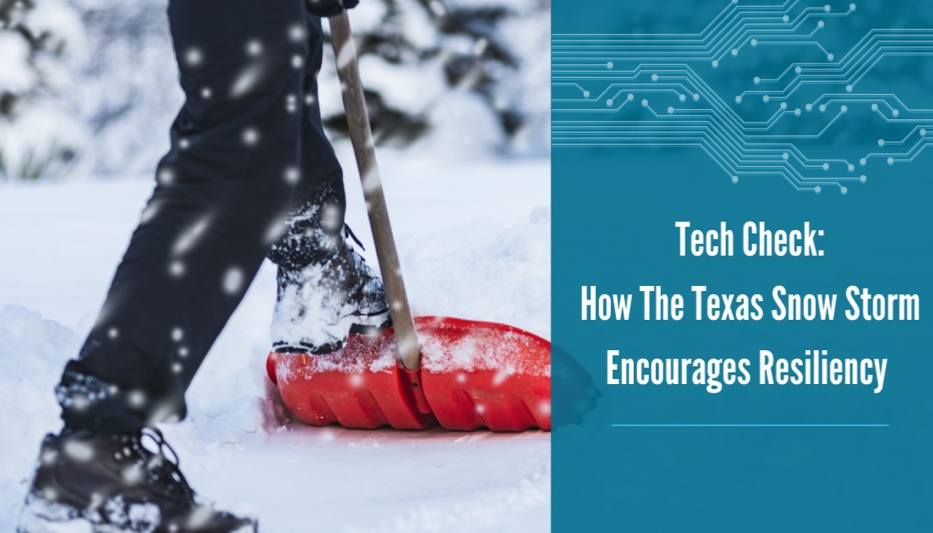Resiliency in Chaos

On February 13, 2021, Winter Storm Uri began to ravage through most of Texas, leaving yet another abrupt eye-opening memory for the U.S. It is disheartening to see millions of people left without heat and power, and we extend our sincerest condolences to those who have lost family members and suffered from the storm’s damages. When leadership, communication, and emergency preparedness is essential for survival, archaic technology fails us.
As leaders in technology, we want to take this moment to dim light on the current situation as a lesson of what to remember when making future decisions: resiliency. The stressors of life can cause a profound impact on our state and local governments in an instant – be prepared by having appropriate infrastructures that can help withstand unexpected changes and make a difference if a situation like this arises again. We all recognize the things that could have been done differently but encourage every organization to utilize this moment as a catalyst for making improvements for the future.
We are in the conceptual age where adaptability and creativity meet to provide a convenient service for almost any economic situation at any given time. It moves beyond the previous ideology of simply maintaining and embraces a notion of flexibility and perseverance. Local governments can thrive during pandemics, national outbreaks, natural disasters, and other unparallel events by moving towards the modern technology age. All it takes is one switch to make a difference in our cities, governments, and other organizations. We need to build up our governments to operate in real-time and establish long-term fiscal sustainability. New developments would not only gain the trust of constituents, but provide a sense of accountability, security and aid in achieving the outcomes that each government desires – a structured, organized, and robust system that can operate without the worry of it collapsing when we need it the most.
As alarming as this experience has been for many, we always pull together to do better. We ask our government leaders to consider making adjustments to solutions that can provide a sense of relief when abnormal has become the new normal. It may take some time to adapt, but in the end, it is a movement that has proven itself to be more effective. We can tackle unthinkable moments a little easier by embracing a change that awaits all of us.
GovSense is the first complete cloud solution purpose-built for local governments, empowering over 60 communities and supporting more than 2 million citizens. Govsense built on Oracle NetSuite—the #1 true cloud ERP platform with over 50,000 customers worldwide— GovSense delivers a modern, unified system that streamlines operations, enhances transparency, and drives efficiency. GovSense’s team has been implementing cloud solutions since 2005, bringing over two decades of expertise in delivering scalable and secure technology for local agencies. As a five-time GovTech 100 recipient, we are recognized as an industry leader in transforming government technology. GovSense is one modern platform that has everything you need for your local government, ensuring your community is equipped with the tools to thrive in the digital age.
